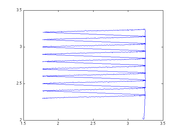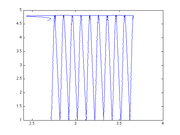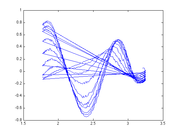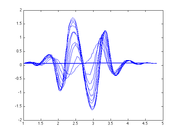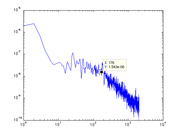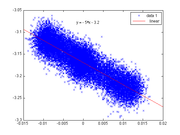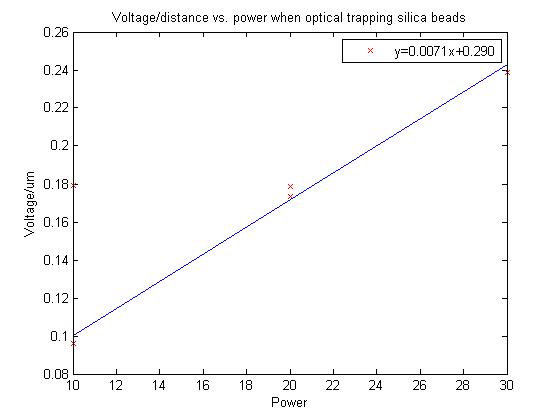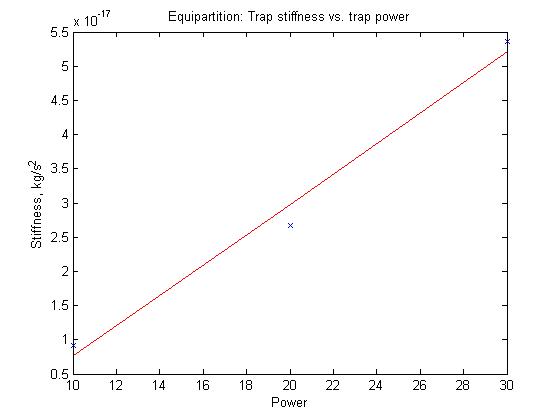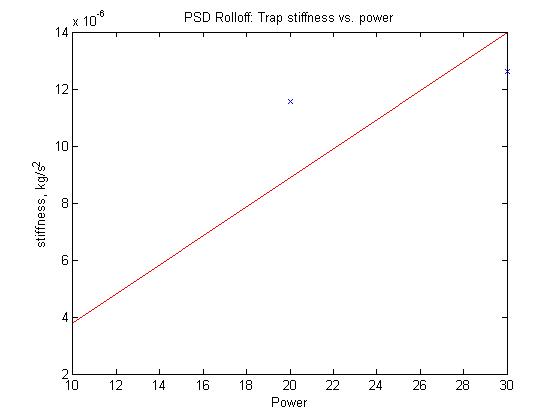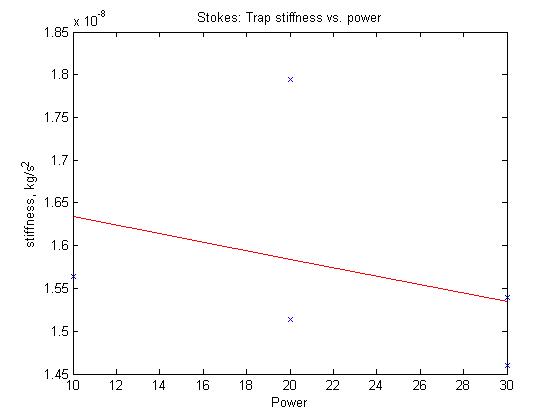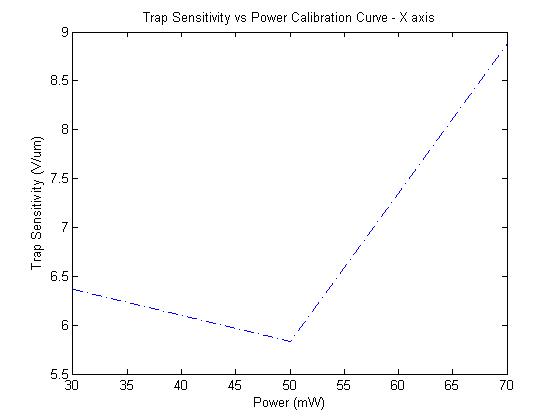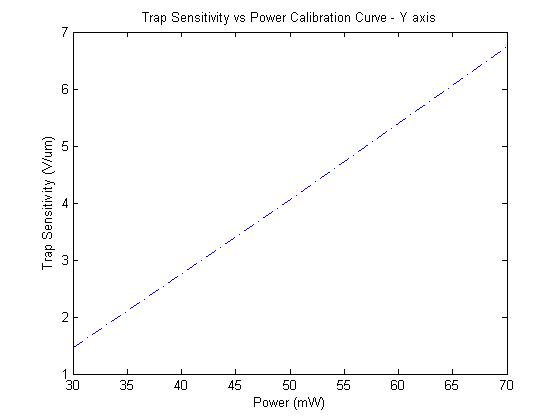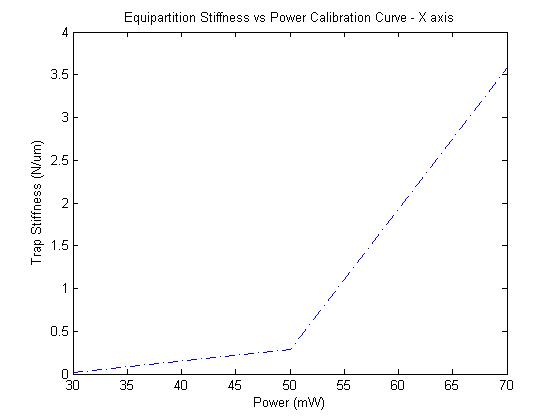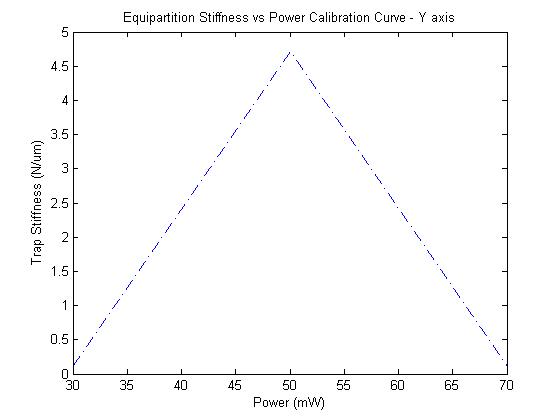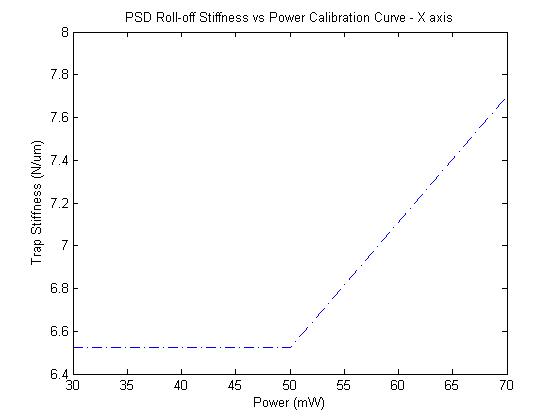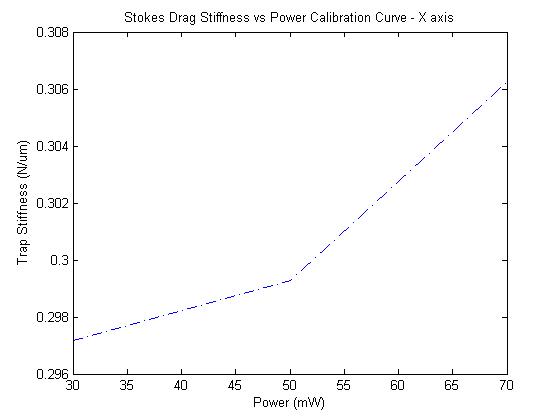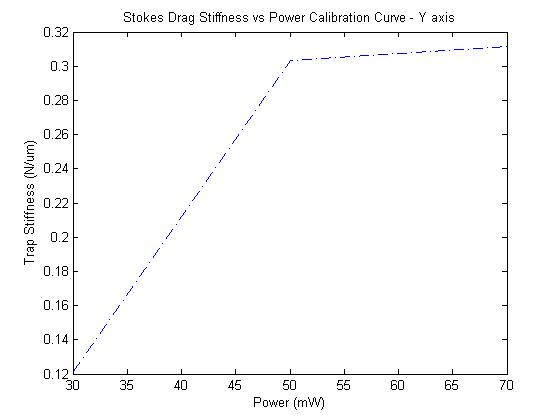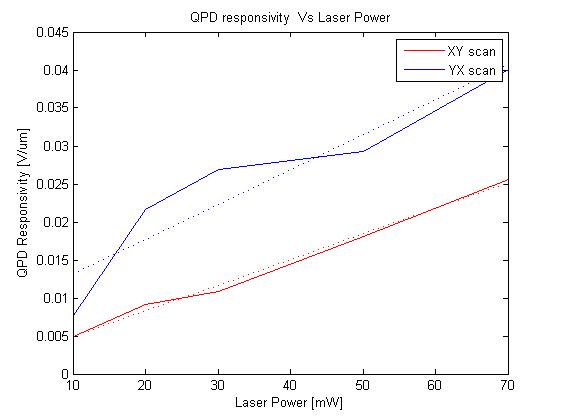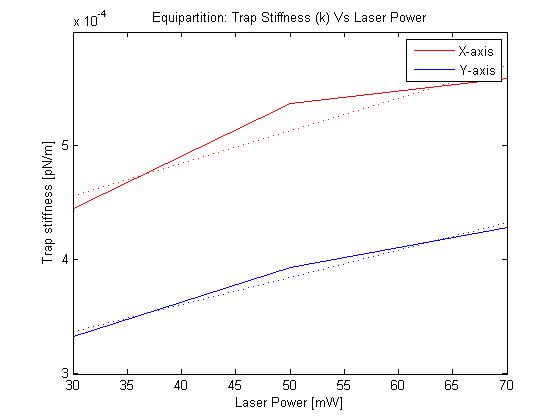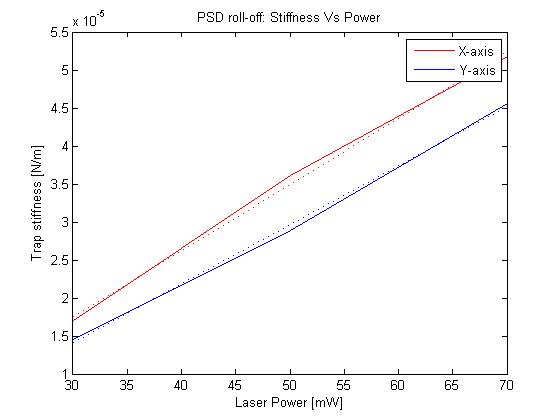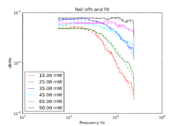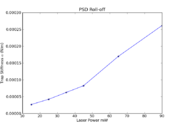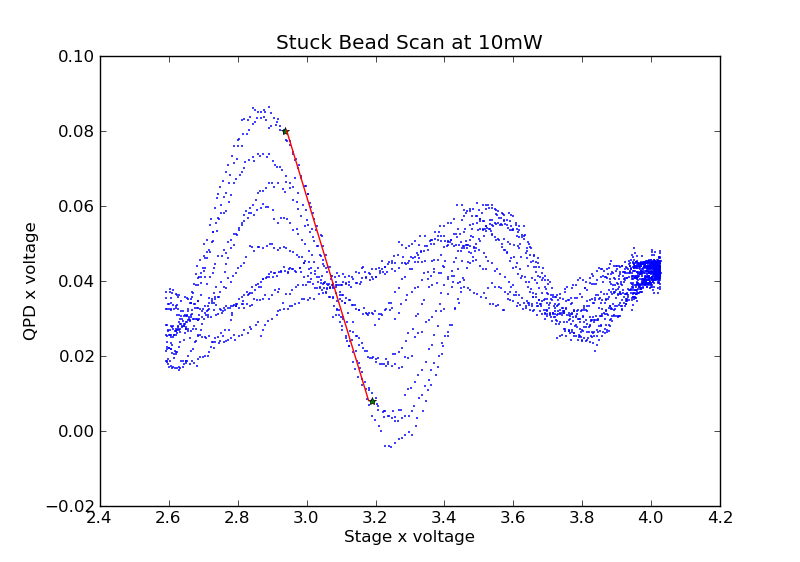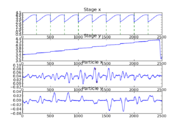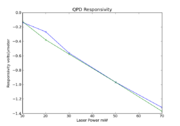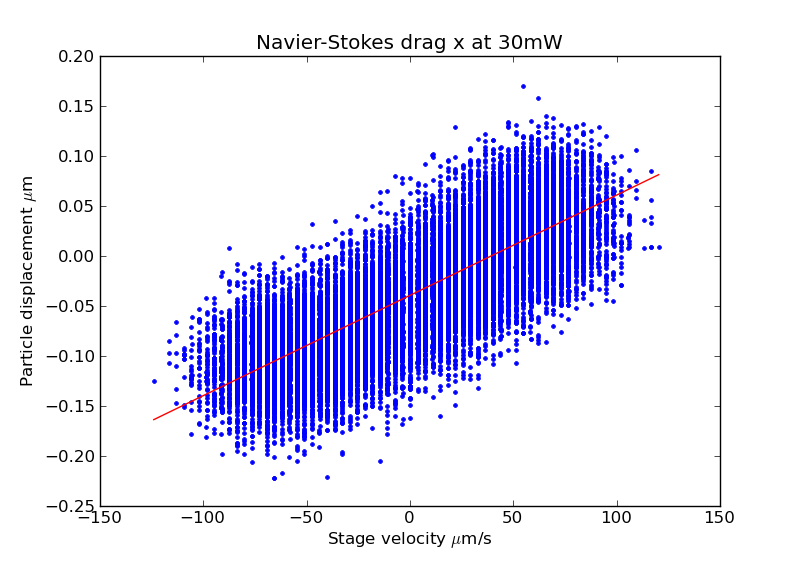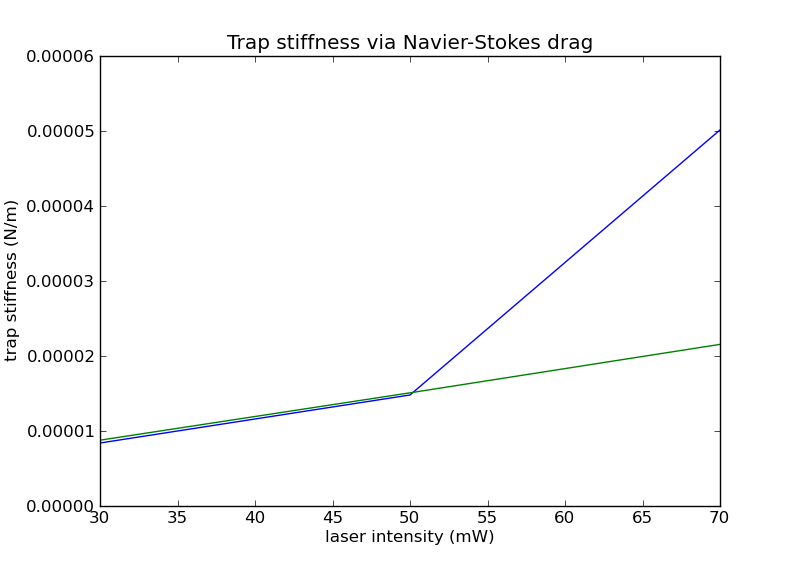Spring 2011:Optical Trapping Lab
Team FTS
Huayu & Cory
XY position detector calibration
Roll Off
Stoke
Equipartition
for 10 mW : 2.09*10^-9 N/m
Team Humble
XY position detector calibration
Trap stiffness by equipartition theorem
These values are off by about 8 orders of magnitude. This graph is up temporarily until I figure out what is going wrong with my calculations.
Trap stiffness by PSD rolloff
These values are about 2 orders of magnitude larger than those found in the OTKB document.
Trap stiffness by Stokes' theorem
These values are about the correct order of magnitude, but the slope of the graph should be positive, not negative! Again, this graph is up temporarily until I can figure out what data processing mistakes are going on.
Team Watson (?)
XY position detector calibration
Although the Y axis plot looks OK, I'm not sure of what happened to the X axis one
Trap stiffness by equipartition theorem
The X-axis plot follows the expected trend of higher stiffness with higher power, but the Y axis has a very off-line measurement, although the orders of magnitude seem right.
Trap stiffness by PSD rolloff
Both of these plots are right around the expected value, although they are around twice the values found for the Equipartition method (maybe there are some conversion errors).
Trap stiffness by Stokes' theorem
Finally, this method seems to follow the expected trend, but its values are around an order of magnitude off from the previous methods. Again, this may be due to unit conversion issues (currently revising).
Team Watson (Emmanuel)
XY position detector calibration
- QPD_XY[V/um] = 3.38e-4 * Power[mW] + 1.6e-3
- QPD_YX[V/um] = 4.60e-4 * Power[mW] + 8.5e-3
Trap stiffness by equipartition theorem
- Equipart_stiff for X axis: kg/s^2 = 4.57e-16 * Power[mW] + 5.14e-16
- Equipart_stiff for Y axis: kg/s^2 = 3.37e-16 * Power[mW] + 3.85e-16
Trap stiffness by PSD rolloff
- PSD roll-off stiff for X axis: kg/s^2 = 1.8e-15 * Power[mW] - 51.6e-15
- PSD roll-off stiff for Y axis: kg/s^2 = 1.9e-15 * Power[mW] - 60.6e-15
Trap stiffness by Stokes' theorem
Team with Brian, Siv, Gustavo
The following analysis is done with data collected by "Team Watson" unless noted otherwise.
Power Spectral Density roll-off
Here, we use the free bead, fixed stage data from "Team GustavSiv".
QPD Responsivity
To perform the next methods, it is necessary to calibrate the QPD.
The procedure depicted in the above graphs is repeated for each measurement, in each of the x and y axes.
Equipartition Method
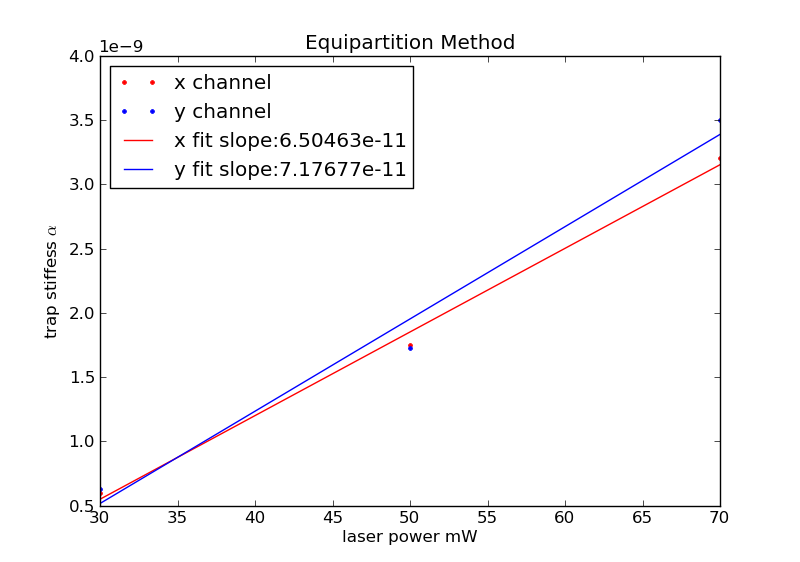 The equipartion method gives results which are off by several orders of magnitude from the expected trap stiffness.
The equipartion method gives results which are off by several orders of magnitude from the expected trap stiffness.
Better news here.
The stage is swept back and forth and the amount of displacement of a free (as in not adhered to the cover slip, but trapped by the laser) bead is plotted over stage velocity.
The best fit line to the data gives a measure of trap stiffness. If the trap were very stiff, then the particle would move very little while the fluid moves around it.
The procedure depicted above is repeated for several laser intensities and for each stage direction.
The point at 70mW unfortunately breaks the expected linear trend.

